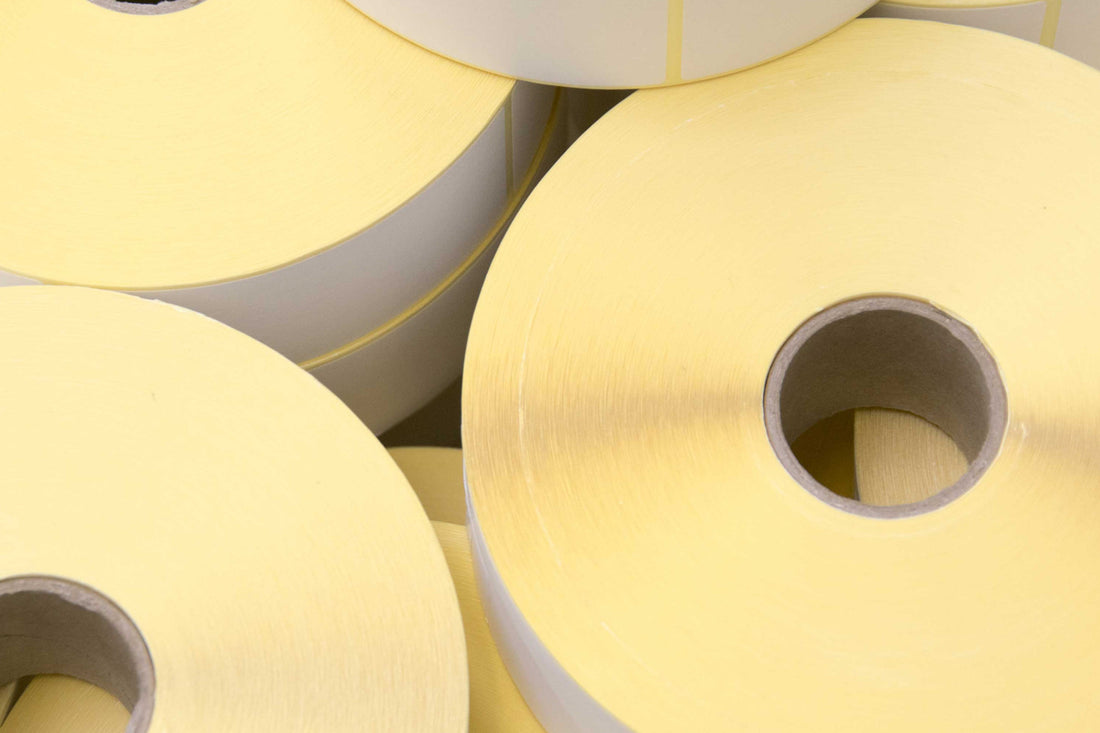
How to Prevent Direct Thermal Label Discoloration and What to Do If It Happens
If you use direct thermal labels for your business, you may have noticed that they sometimes change color over time. This discoloration can affect the readability and appearance of your labels, which can have negative consequences for your brand image and customer satisfaction. In this blog post, we will explain what causes direct thermal labels to discolor, how to prevent it, and what to do if it happens.
Direct thermal labels are made of a special paper that reacts to heat. When the paper passes through a thermal printer, the heat activates a chemical coating on the paper, creating a dark image on the label. This process eliminates the need for ink or ribbon, making direct thermal labels more cost-effective and environmentally friendly than other types of labels.
However, the same chemical coating that allows direct thermal labels to print without ink also makes them sensitive to other sources of heat, light, and moisture. Exposure to these elements can cause the labels to darken or fade over time, resulting in discoloration. Some common factors that can cause direct thermal label discoloration are:
- High temperatures: Direct thermal labels should be stored and used in a cool and dry place, away from direct sunlight and heat sources. Temperatures above 140°F (60°C) can cause the labels to darken prematurely.
- Ultraviolet light: Direct thermal labels should be protected from exposure to UV light, such as sunlight or fluorescent lamps. UV light can degrade the chemical coating and cause the labels to fade or yellow.
- Moisture: Direct thermal labels should be kept away from humidity and liquids. Moisture can react with the chemical coating and cause the labels to blur or smudge.
- Friction: Direct thermal labels should be handled with care and avoid rubbing against rough surfaces or objects. Friction can damage the chemical coating and cause the labels to scratch or peel.
To prevent direct thermal label discoloration, you should follow these best practices:
- Choose the right label material: Direct thermal labels come in different grades and qualities, depending on your application and budget. Some labels have a protective topcoat that makes them more resistant to heat, light, and moisture. Others have a synthetic base that makes them more durable and waterproof. You should consult with your label supplier to find the best option for your needs.
- Choose the right printer settings: Direct thermal printers have different print speeds and heat settings, depending on the model and manufacturer. You should adjust these settings according to the label material and size you are using, to ensure optimal print quality and durability. You should also clean your printer regularly and replace the print head when needed, to avoid dust and debris buildup that can affect the print quality.
- Choose the right label application: Direct thermal labels are suitable for short-term applications that do not require high durability or exposure to harsh environments. For example, direct thermal labels are ideal for shipping labels, receipts, tickets, coupons, and name tags. If you need labels that last longer or withstand more challenging conditions, you may want to consider other types of labels, such as thermal transfer labels or inkjet labels.
If your direct thermal labels have already discolored, you may be able to restore them by following these steps:
- Remove the source of discoloration: If possible, identify and eliminate the factor that caused the discoloration, such as heat, light, or moisture. For example, if your labels were exposed to sunlight, you may want to move them to a shaded area or cover them with a dark material.
- Apply heat or cold: Depending on the type of discoloration, you may be able to reverse it by applying heat or cold to the affected area. For example, if your labels have darkened due to heat exposure, you may want to try cooling them down with ice or a freezer. If your labels have faded due to UV exposure, you may want to try heating them up with a hair dryer or an oven.
- Replace the labels: If none of the above methods work, or if the discoloration is too severe or widespread, you may have no choice but to replace the labels with new ones. You should also take this opportunity to review your label storage and usage practices and make any necessary changes to prevent future discoloration.
Direct thermal label discoloration is a common problem that can affect your business reputation and performance. By understanding what causes it and how to prevent it, you can ensure that your direct thermal labels remain clear and legible for as long as possible.
